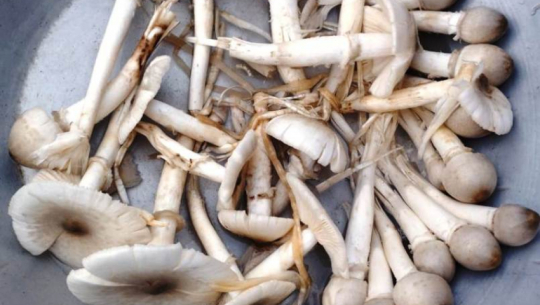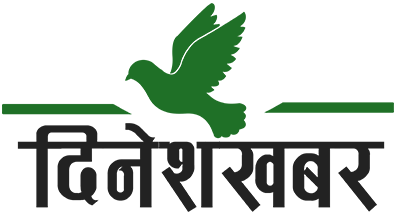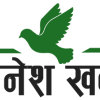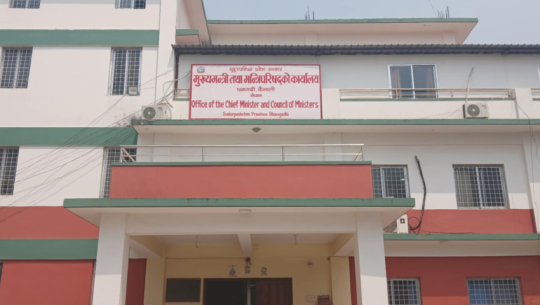Tharu women engage in traditional search for ‘Bhemti’ wild mushrooms during monsoon

Kanchanpur: With the fields soaked by the rains of Shrawan and the rice paddies turning lush green, Tharu men and women, now free from their farming duties, have taken to the forests in search of ‘Bhemti’—wild mushrooms—despite the rain.
“During the rainy season, I feel compelled to go to the forest,” said Raj Bahadur Chaudhary of Shuklaphanta Municipality-10. “Even if I taste Bhemti just once, I must walk through the forest to find it.” For the Tharu community, Bhemti is a vital and nutritious seasonal delicacy.
Known as ‘Chyau’ in Nepali, Bhemti mushrooms are soft, flavorful, and an essential part of the Tharu diet during the monsoon months of Shrawan, Bhadra, Asoj, and Kartik. Farmer Bhonsuwa Chaudhary explained, “We know which mushrooms are poisonous and which are edible—we only collect the safe ones.” This knowledge, he said, has been passed down through generations.
According to Chaudhary, mushrooms collected in Shrawan are smaller with long roots, while those found in Bhadra and Asoj have bigger caps and even longer stems, sometimes reaching up to the length of a hand. In Kartik, smaller varieties called ‘Katki’ are common. Mushrooms grow in clusters in specific areas of the forest, which are often known only to elders and seasoned gatherers. “The same spot where mushrooms grow this year will yield them again next year—you just need to know when and where to look, especially around Ausi and Purnima,” said 68-year-old Pardeshi Dagaura.
Traditionally, Bhemti is more than just a seasonal harvest; it is also considered a delicacy for honored guests during festivals like Dashain and Ashtamki, where dried mushroom and fish curry is served alongside rice, lentils, and meat. “A small amount of mushrooms works like medicine, but eating too many can cause illness like diarrhea,” locals say, emphasizing moderation.
The skill of identifying and harvesting edible mushrooms is considered an inherited art among the Tharu people. Edible mushrooms, according to the elders, have deep roots, grow in clusters, and don’t break easily, unlike inedible varieties with smaller roots and slightly different coloration.
Rich in protein, minerals, and vitamins, mushrooms are also low in fat and easily digestible. “The Tharu have been cooking and eating mushrooms for generations, and the tradition continues,” said Chaudhary. However, he noted that with forests increasingly protected and access restricted, fewer members of the younger generation are engaging in mushroom gathering today.













